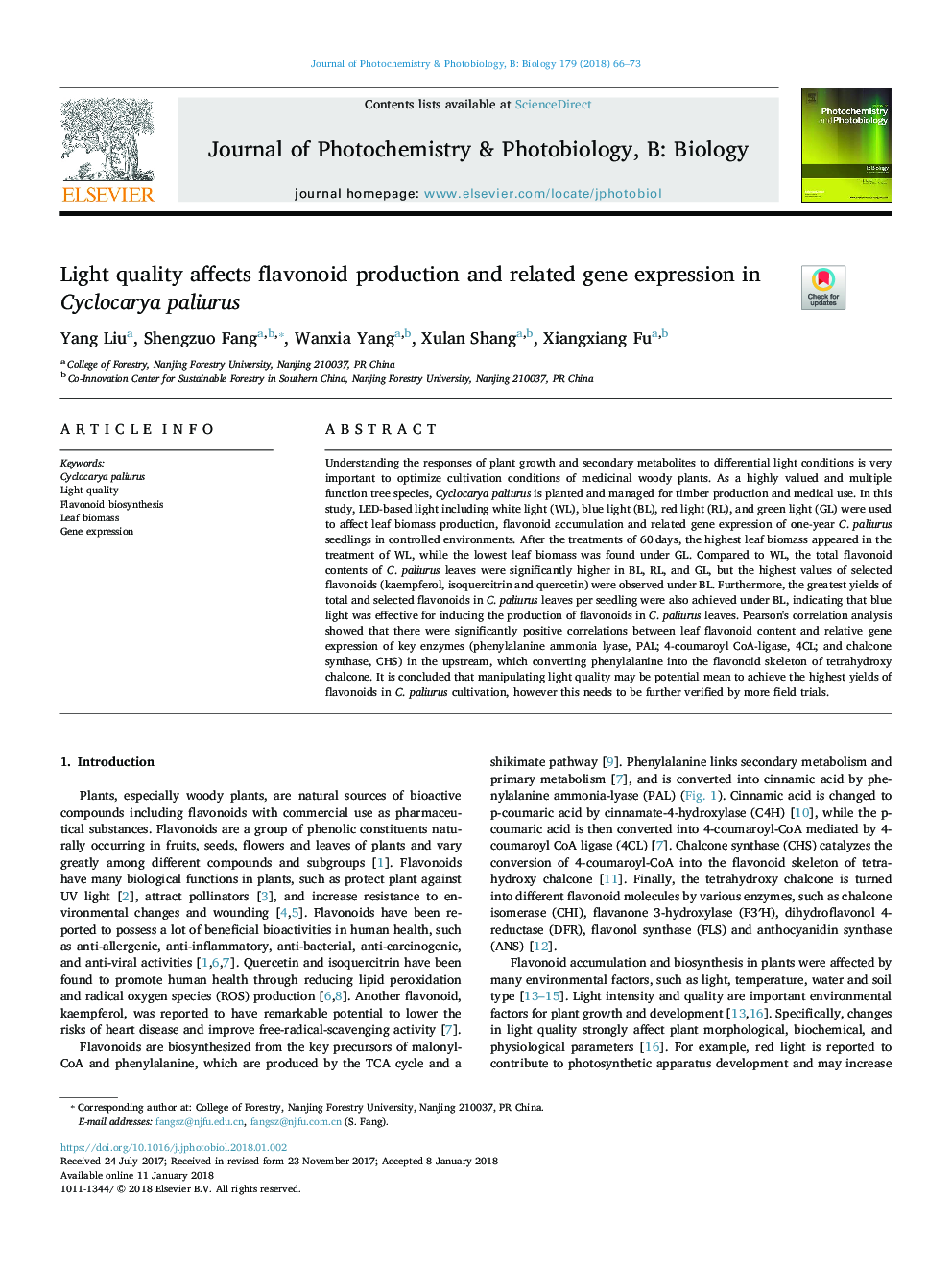| Article ID | Journal | Published Year | Pages | File Type |
|---|---|---|---|---|
| 6493381 | Journal of Photochemistry and Photobiology B: Biology | 2018 | 8 Pages |
Abstract
Understanding the responses of plant growth and secondary metabolites to differential light conditions is very important to optimize cultivation conditions of medicinal woody plants. As a highly valued and multiple function tree species, Cyclocarya paliurus is planted and managed for timber production and medical use. In this study, LED-based light including white light (WL), blue light (BL), red light (RL), and green light (GL) were used to affect leaf biomass production, flavonoid accumulation and related gene expression of one-year C. paliurus seedlings in controlled environments. After the treatments of 60â¯days, the highest leaf biomass appeared in the treatment of WL, while the lowest leaf biomass was found under GL. Compared to WL, the total flavonoid contents of C. paliurus leaves were significantly higher in BL, RL, and GL, but the highest values of selected flavonoids (kaempferol, isoquercitrin and quercetin) were observed under BL. Furthermore, the greatest yields of total and selected flavonoids in C. paliurus leaves per seedling were also achieved under BL, indicating that blue light was effective for inducing the production of flavonoids in C. paliurus leaves. Pearson's correlation analysis showed that there were significantly positive correlations between leaf flavonoid content and relative gene expression of key enzymes (phenylalanine ammonia lyase, PAL; 4-coumaroyl CoA-ligase, 4CL; and chalcone synthase, CHS) in the upstream, which converting phenylalanine into the flavonoid skeleton of tetrahydroxy chalcone. It is concluded that manipulating light quality may be potential mean to achieve the highest yields of flavonoids in C. paliurus cultivation, however this needs to be further verified by more field trials.
Related Topics
Physical Sciences and Engineering
Chemical Engineering
Bioengineering
Authors
Yang Liu, Shengzuo Fang, Wanxia Yang, Xulan Shang, Xiangxiang Fu,
